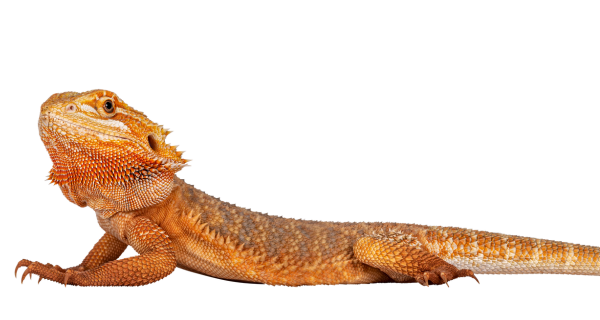
Written by The Pet Directory with information and images supplied by Dr. Peter Cameron, Altona North Veterinary Clinic

So, why are bearded dragons quickly becoming one of the most popular pet lizards in Australia, indeed the world?
Many factors are involved, but the most relevant are:
• A cute, even attractive appearance (to some!),
• Relatively easy to keep (once past juvenile stage),
• Widespread availability of captive bred animals,
• Hardy disposition (if keeper does his/her part),
• Inexpensive to purchase and maintain,
• Manageable size, easy to handle, good natured,
• Availability of different colour morphs,
• Interaction with owners,
• Many people had a childhood fascination with dinosaurs and beardies prehistoric appearance reawakens interest,
• Surge of interest in the keeping of exotic or unusual pets.
In Victoria, two species are available – the inland bearded dragon (Pogona vitticeps) and the eastern bearded dragon (Pogona barbata)..
Inland beardies are widely available, cheaper to purchase, significantly more hardy than easterns and are therefore the species I recommend as a pet lizard. The rest of the article will specifically deal with inland beardies, but much of the information is applicable to easterns or species available in other states of Australia.
Baby bearded dragons start life weighing approximately 3 grams and their overall length is 8-9 cms. Hatchlings are delicate and not a good choice for an inexperienced keeper. Hatchlings grow quickly - by the time they are fully mature they can weigh over 600gms (average 300gms) and reach nearly 60cms in length (average 45cms). Ideally, try to purchase a well started animal 2-4 months of age, bypassing the delicate hatchling stage.

DR. PETER CAMERON WITH GIPPSLAND WATER DRAGON
“ I strongly recommend you have your new pet examined by an experienced reptile veterinarian” says Dr. Cameron
The beardie should look plump with no obvious bony features (e.g. pelvic bones not visible), it should be active, bright eyed and will vigorously pursue crickets when offered. There should be no faeces adhering to or staining the cloacal opening. Carefully check all limbs/toes/tail for bite wounds or missing parts. If choosing from a cage with multiple animals (i.e. pet shop), select from the two or three largest animals as these are already the most vigorous. After making your selection, I strongly recommend you have your new pet examined by an experienced reptile veterinarian - you would do this for a new puppy, so why not for a reptile? Have this check performed within the warranty period provided by pet shop/seller.
Most of you will purchase your first reptile cage (often called a vivarium overseas), though they are not difficult to build if you are a handyman and have a good understanding of necessary husbandry requirements.
The most important considerations are cage size, heating/lighting (and control of), ventilation, access for cleaning, substrate choice, humidity and cage “furniture”.
The single most important point is providing a thermal gradient – essentially, a hot end and a cooler end of the cage (the lizard can then move back and forth and select its required temperature). Ideally, there should be a basking spotlight and several blue/red globes at the hot end of the cage – the spotlight provides a small high temperature basking area and the blue/red globes provide a safe background temperature when required. In addition, a fluoro tube is placed in the middle of the cage to provide “daylight” and more importantly, a source of UVB radiation. The spotlight is on a timer for 2-3 hours early each morning and then off until late afternoon, when it comes on for 2-3 hours. The blue/red globes are under thermostat control and come on and off to provide background temperature throughout the day and night. All the above, combined with an appropriately sized cage, will provide an optimal thermal gradient and a close to natural heating/lighting cycle.

GIPPSLAND WATER DRAGON
Cage size for 1-2 beardies should be a minimum of .9 x .6 x .6m (3 x 2 x 2 feet) and 1.2 x .6 x .6m (4 x 2 x 2 feet) would be better. Obviously, the longer the cage the more chance of establishing a thermal gradient within the cage. There should be adequate ventilation to enable airflow/air exchange, but remember beardies are essentially a dry, warm climate animal, so you may have to close off some ventilation during colder months. Most cages are front opening as this allows easy access for cage maintenance. I prefer outward opening doors on hinges, but sliding glass doors on plastic tracks are the usual design. Consider a riser at the front if purchasing this type of cage, otherwise substrate in the tracks will drive you crazy. Suitable substrates are red desert sands, artificial calcium-based sands or newspaper. Keep the cage warm and dry and have a shallow water bowl at the cool end of the cage. This will ensure humidity levels will be adequate. Cage furniture consists of firmly anchored branches placed to allow natural climbing and basking behaviour and perhaps a large, flat based rock for similar purposes – remember the rock must be on the bottom of the cage and not on the substrate or a burrowing lizard may be crushed to death. Regular cage cleaning is required to maintain the health of your pet – spot clean 1-2 times a week and every 4-6 weeks clean the cage with an appropriate reptile cage cleaner. Your cage should never have an ammonia-like odour, if so it is filthy!!
“Bearded dragons should be considered omnivorous – in the wild and in captivity they will eat a wide variety of animal and plant matter.” says Dr. Cameron
Juveniles are primarily insectivores (80% insects, 20% plant) and as they mature into adults are, or should be, mainly herbivores (80% plants, 20% insects). Unfortunately, the situation in captivity is such that most beardies receive a high insect diet throughout their lives –largely due to a poor understanding of dietary requirements and how they change as the animal matures. Feed juveniles twice daily with small sized crickets and ensure that finely chopped plant matter is always available to them. The length of the feeder insect should be no more than ½ the width of the bearded dragon’s head and they should have been gut-loaded prior to feeding off. Gut loading is where the crickets are fed a highly nutritious diet, so that they are packed with goodness when they are fed to your pet lizard.
Prior to feeding, liberally dust feeder insects with a quality calcium reptile supplement - once weekly use a multivitamin supplement instead of the calcium powder. In addition, ensure that a quality UVB fluoro tube is present so that the beardies can produce vitamin D3 (which is necessary for the uptake and utilisation of calcium in the body). I recommended Zoo Med’s Reptisun tubes for this purpose - make sure the beardies can bask within 20-30cm of the fluoro and ensure the light does not pass through plastic or glass prior to reaching the lizard. As your beardie matures, the frequency of insect feeding can be reduced e.g. an adult can be fed 4-5 adults crickets every 2nd day and should have access to a wide variety of plant/vegetable matter daily. Continue to supplement your adult’s diet, but at a reduced rate, as obviously the rapid growth rate has slowed or stopped.
Bearded dragons are, in my opinion, the best pet reptile going round!! They are delicate when young and should be handled infrequently during this period.
Gradually increase gentle handling as they mature, and commence hand feeding of insects to reinforce the bond developing between you and your pet. Don’t allow your beardie to freely roam around your house – far better to lizard-proof a specific room and know that your lizard is in a safe environment. Thumbtacks, marbles, rubber bands – in fact any small brightly coloured objects, can be lethal if ingested. Other hazards include dogs, cats, clumsy toddlers and people who have a reptile phobia!
Beardies are hardy animals, but can suffer from a range of illnesses – most attributable to poor husbandry/management. Common diseases include nutritional metabolic bone disease, intestinal parasites (coccidia and pinworms), bite and trauma injuries, dental disease and respiratory infections. From an owner’s perspective, the most important thing is being able to recognise when your lizard is ill.

Ask yourself – has it stopped eating? Is it lethargic? Has it lost weight? Is it acting strangely? Has it developed diarrhoea? Is it limping etc?
You know your beardies unique characteristics/behaviour patterns better than anyone, so should be able to quickly recognise if something is wrong. If you are concerned don’t wait, rather seek immediate help from an experienced reptile veterinarian.


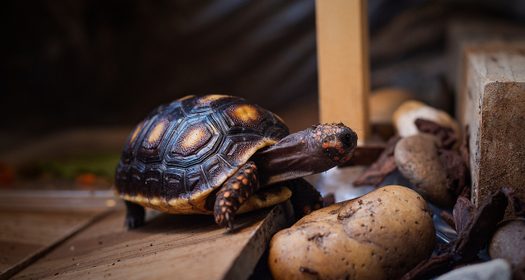
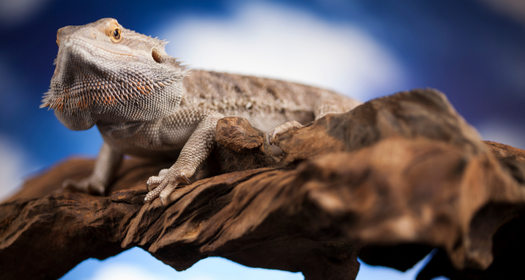
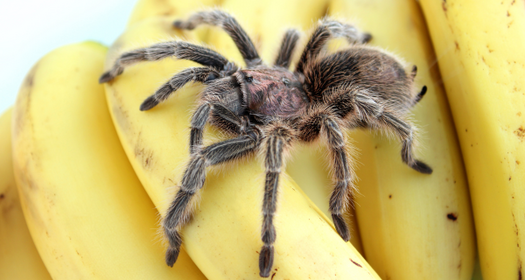
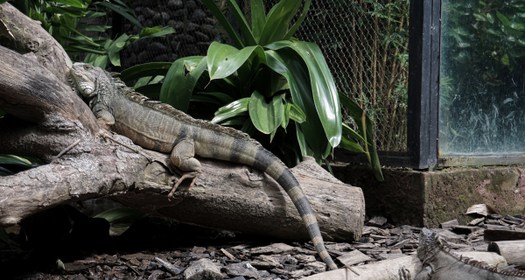
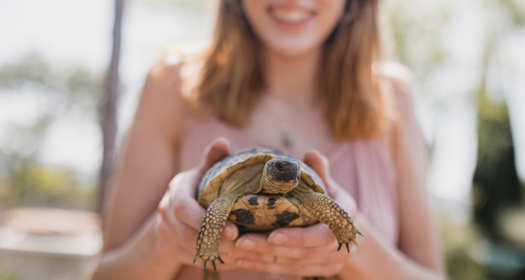




Leave Comment Below